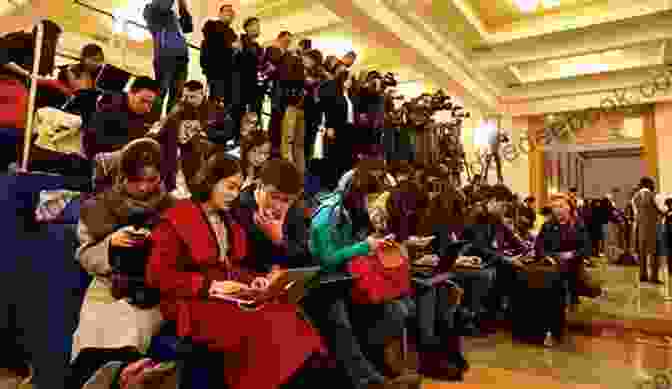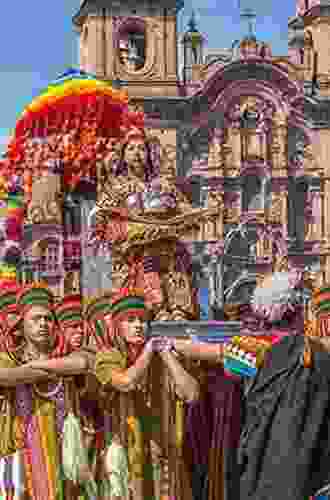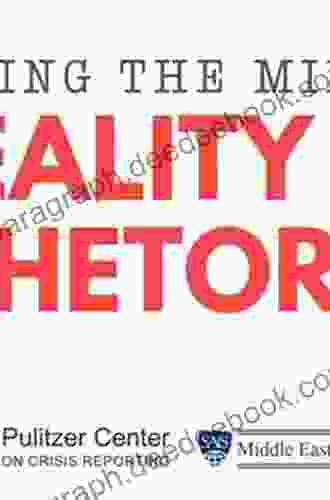Media Transparency in China: Rethinking Rhetoric and Reality

5 out of 5
| Language | : | English |
| File size | : | 1589 KB |
| Text-to-Speech | : | Enabled |
| Screen Reader | : | Supported |
| Enhanced typesetting | : | Enabled |
| Word Wise | : | Enabled |
| Print length | : | 220 pages |
China's media landscape has long been characterized as one of the most opaque and tightly controlled in the world. The Communist Party's pervasive influence over the media has led to the widespread perception that the country's media outlets are merely mouthpieces for the government, devoid of any real independence or transparency.
However, in recent years, there have been increasing signs that the Chinese media landscape is becoming more diverse and independent. A growing number of independent media outlets have emerged, and even state-owned media outlets have begun to show signs of greater independence from the government.
This article examines the media transparency landscape in China, challenging the conventional wisdom that the country's media is monolithic and tightly controlled by the government. Through an analysis of recent developments, the article argues that the Chinese media ecosystem is more complex and dynamic than often portrayed, with increasing signs of diversity and independence.
The Rhetoric of Media Control
The Chinese government has long maintained a tight grip on the media. The Communist Party's Central Propaganda Department is responsible for overseeing the media, and all media outlets must adhere to strict censorship guidelines. In addition, the government owns and operates a vast majority of the country's media outlets, including the three major state-owned television networks and the Xinhua News Agency.
The government's control over the media has been used to promote the Party's ideology and to suppress dissent. Media outlets are required to promote the "core socialist values" of patriotism, collectivism, and socialism. Any content that is deemed to be harmful to the Party or the state is subject to censorship.
The government's rhetoric of media control has been largely successful in creating the perception that the Chinese media is monolithic and tightly controlled. However, a closer examination of the media landscape reveals a more complex and dynamic picture.
The Reality of Media Diversity
In recent years, there has been a growing diversity of media outlets in China. In addition to the state-owned media, there are now a number of independent media outlets that are not subject to direct government control. These outlets include online news sites, social media platforms, and independent magazines.
The growth of independent media outlets has been driven by a number of factors, including the rise of the internet and the increasing demand for independent news and information. The internet has provided a new platform for independent media outlets to reach a wider audience, and social media has made it easier for these outlets to connect with their readers.
The increasing demand for independent news and information has been driven by a number of factors, including the growing middle class, the increasing level of education, and the increasing exposure to foreign media.
The growth of independent media outlets has had a significant impact on the Chinese media landscape. Independent media outlets have provided a new source of news and information for the Chinese people, and they have helped to create a more open and diverse media environment.
The Signs of Media Independence

In addition to the growth of independent media outlets, there are also signs that state-owned media outlets are becoming more independent from the government.
One of the most significant signs of media independence is the increasing willingness of state-owned media outlets to criticize the government. In recent years, a number of state-owned media outlets have published articles that criticize the government's policies or actions. These articles indicate that state-owned media outlets are no longer simply mouthpieces for the government, but are now willing to express independent views.
Another sign of media independence is the increasing willingness of state-owned media outlets to report on sensitive topics. In recent years, a number of state-owned media outlets have reported on topics that were once considered taboo, such as corruption, environmental pollution, and social inequality. These reports indicate that state-owned media outlets are no longer simply propaganda outlets, but are now willing to report on the real issues facing China.
The increasing independence of state-owned media outlets is a significant development. It indicates that the government is willing to tolerate a greater degree of media independence. This is likely due to the fact that the government realizes that a more open and diverse media environment is necessary for a healthy and prosperous society.
The Challenges of Media Transparency
Despite the increasing signs of media diversity and independence, there are still a number of challenges to media transparency in China.
One of the biggest challenges is the government's continued censorship of the media. The government has a wide range of tools at its disposal to censor the media, including internet censorship, media ownership, and the use of propaganda. These tools make it difficult for independent media outlets to operate and for the Chinese people to access independent news and information.
Another challenge to media transparency is the lack of a strong legal framework to protect media freedom. The Chinese constitution guarantees freedom of speech, but there are a number of laws that restrict this right. These laws make it difficult for journalists to investigate sensitive topics and to criticize the government.
Despite these challenges, the Chinese media landscape is becoming more diverse and independent. The growth of independent media outlets and the increasing independence of state-owned media outlets are positive signs for the future of media transparency in China.
The Chinese media landscape is not as monolithic as it is often portrayed. While the government still maintains a tight grip on the media, there are increasing signs of diversity and independence. Independent media outlets are growing in number, and state-owned media outlets are becoming more willing to criticize the government and report on sensitive topics.
These developments are positive signs for the future of media transparency in China. As the media environment becomes more open and diverse, the Chinese people will have greater access to independent news and information. This will help to create a more informed and engaged citizenry, which is essential for a healthy and prosperous society.
5 out of 5
| Language | : | English |
| File size | : | 1589 KB |
| Text-to-Speech | : | Enabled |
| Screen Reader | : | Supported |
| Enhanced typesetting | : | Enabled |
| Word Wise | : | Enabled |
| Print length | : | 220 pages |
Do you want to contribute by writing guest posts on this blog?
Please contact us and send us a resume of previous articles that you have written.
 Novel
Novel Chapter
Chapter Text
Text Story
Story Genre
Genre Library
Library Paperback
Paperback Magazine
Magazine Newspaper
Newspaper Paragraph
Paragraph Sentence
Sentence Bookmark
Bookmark Shelf
Shelf Glossary
Glossary Bibliography
Bibliography Annotation
Annotation Scroll
Scroll Codex
Codex Tome
Tome Classics
Classics Dictionary
Dictionary Resolution
Resolution Librarian
Librarian Catalog
Catalog Borrowing
Borrowing Archives
Archives Periodicals
Periodicals Study
Study Research
Research Scholarly
Scholarly Reserve
Reserve Academic
Academic Journals
Journals Rare Books
Rare Books Special Collections
Special Collections Study Group
Study Group Thesis
Thesis Awards
Awards Book Club
Book Club Theory
Theory Stephen Macekura
Stephen Macekura Gundi Gabrielle
Gundi Gabrielle Susan Rubin Suleiman
Susan Rubin Suleiman Dandi Palmer
Dandi Palmer Christine Perry
Christine Perry Seth Cropsey
Seth Cropsey Mark Pendergrast
Mark Pendergrast Joanna Cazden
Joanna Cazden Barry Friedman
Barry Friedman Felena Gmbh
Felena Gmbh Douglas Van Praet
Douglas Van Praet Jeffrey Manber
Jeffrey Manber Larry Hyslop
Larry Hyslop Todd Tarpley
Todd Tarpley Kathleen Fuller
Kathleen Fuller Dorothy Canfield Fisher
Dorothy Canfield Fisher Russell Hoye
Russell Hoye J D Hayworth
J D Hayworth Daniel Defoe
Daniel Defoe Joseph C Zinker
Joseph C Zinker
Light bulbAdvertise smarter! Our strategic ad space ensures maximum exposure. Reserve your spot today!

 Miguel NelsonDivided Politics, Divided Nation: The Impact of Political Polarization on...
Miguel NelsonDivided Politics, Divided Nation: The Impact of Political Polarization on... Garrett PowellFollow ·17.9k
Garrett PowellFollow ·17.9k Kurt VonnegutFollow ·6.7k
Kurt VonnegutFollow ·6.7k Brenton CoxFollow ·8k
Brenton CoxFollow ·8k Doug PriceFollow ·18.3k
Doug PriceFollow ·18.3k Alexander BlairFollow ·14.5k
Alexander BlairFollow ·14.5k Juan RulfoFollow ·15.3k
Juan RulfoFollow ·15.3k Hassan CoxFollow ·14.3k
Hassan CoxFollow ·14.3k Ivan TurgenevFollow ·14.7k
Ivan TurgenevFollow ·14.7k

 Ricky Bell
Ricky BellThe Marriage: An Absolutely Jaw-Dropping Psychological...
In the realm of...

 Ray Blair
Ray BlairDiscover the Enchanting Charm of Budapest and Its...
Nestled in the heart of...

 Tyrone Powell
Tyrone PowellHuddle: How Women Unlock Their Collective Power
Huddle is a global movement that empowers...

 Grayson Bell
Grayson BellThe Coin Story of the Holocaust: A Symbol of Hope and...
In the depths of the...

 Virginia Woolf
Virginia WoolfFolklore Performance and Identity in Cuzco, Peru: A...
Nestled amidst...

 Dylan Mitchell
Dylan MitchellThe Enduring Love Story of Héloïse and Abélard: A Tale of...
An Intellectual Passion In the heart of...
5 out of 5
| Language | : | English |
| File size | : | 1589 KB |
| Text-to-Speech | : | Enabled |
| Screen Reader | : | Supported |
| Enhanced typesetting | : | Enabled |
| Word Wise | : | Enabled |
| Print length | : | 220 pages |










